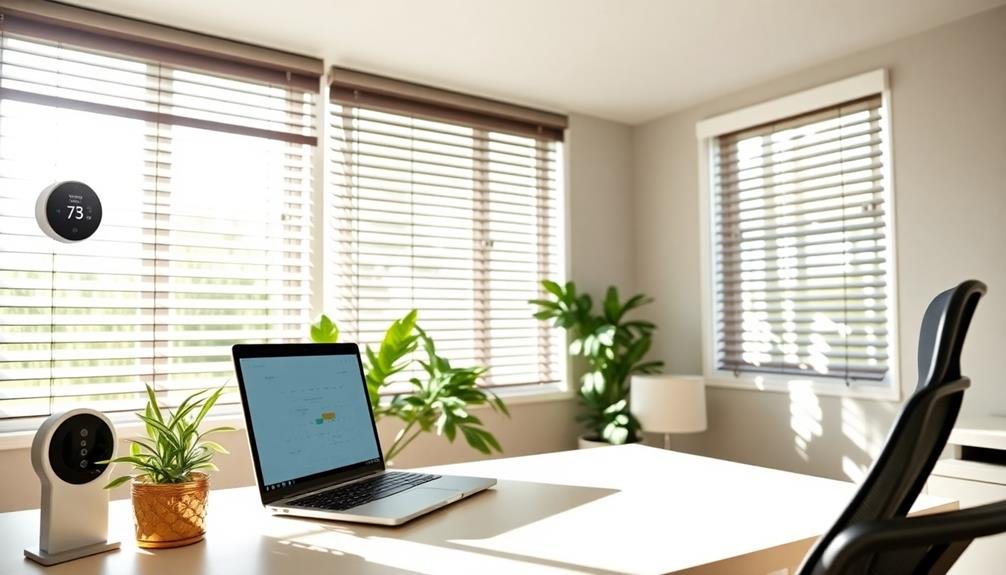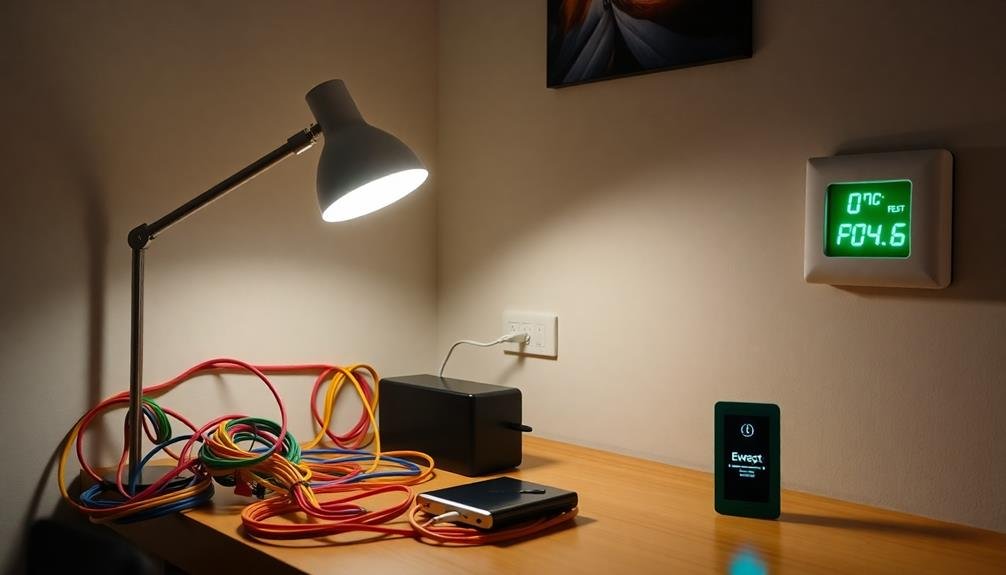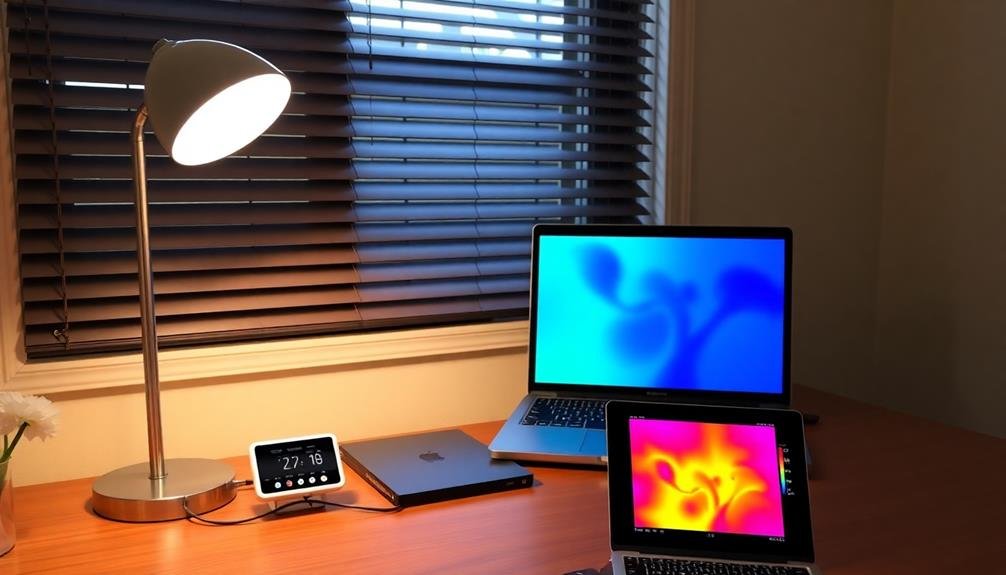The three best passive roof ventilation designs for cooling are ridge vents, solar-powered attic fans, and cupolas or roof monitors. Ridge vents, located at the roof peak, allow hot air to escape and create natural airflow. Solar-powered attic fans use renewable energy to reduce heat buildup and lower your AC's workload. Cupolas and roof monitors combine functionality with aesthetics, promoting natural convection and cross-ventilation. These designs improve energy efficiency, maintain consistent attic temperatures, and reduce reliance on mechanical cooling systems. By incorporating these solutions, you'll enhance your home's comfort and potentially lower your energy bills. Exploring each option further will reveal their unique benefits and applications.
Ridge Vents

Ridge vents, the unsung heroes of passive roof ventilation, run along the peak of your roof. These long, narrow openings allow hot air to escape from your attic, creating a natural airflow that keeps your home cooler.
They're designed to blend seamlessly with your roofline, maintaining your home's aesthetic while providing essential ventilation.
You'll find ridge vents particularly effective when paired with soffit vents at the roof's eaves. This combination creates a continuous air current, drawing cooler air in through the soffits and expelling warm air through the ridge.
It's a simple yet powerful system that works year-round, reducing moisture buildup in winter and heat accumulation in summer.
Installing ridge vents can greatly improve your home's energy efficiency. They help maintain a consistent attic temperature, reducing the workload on your HVAC system and potentially lowering your energy bills.
Ridge vents also extend your roof's lifespan by preventing moisture-related damage and reducing ice dam formation in colder climates.
When properly installed, they're virtually maintenance-free and offer superior protection against rain and snow infiltration compared to other vent types.
Solar-Powered Attic Fans
A modern twist on traditional attic ventilation, solar-powered attic fans offer an eco-friendly and energy-efficient solution for homeowners. These fans harness the sun's energy to power small motors that expel hot air from your attic, reducing the overall temperature of your home.
You'll find that solar-powered attic fans are easy to install and require minimal maintenance. They operate autonomously, kicking in when the attic temperature rises and shutting off when it cools down. This automatic function guarantees peak performance without any input from you.
One of the key benefits you'll enjoy is the potential for lower energy bills. By reducing the heat buildup in your attic, these fans decrease the workload on your air conditioning system. They're particularly effective in hot climates where attic temperatures can soar.
When choosing a solar-powered attic fan, consider the size of your attic and the pitch of your roof. You'll want to verify the fan has enough capacity to ventilate your space effectively.
Some models come with additional features like thermostats or humidistats, allowing for more precise control over your attic's environment.
Cupolas and Roof Monitors

Often overlooked, cupolas and roof monitors serve as both functional and aesthetic elements in passive roof ventilation. These structures sit atop your roof, creating openings that allow hot air to escape while drawing in cooler air from below.
Cupolas are small, usually dome-shaped structures with vented sides. They're particularly effective in homes with steep roofs, where heat tends to accumulate at the peak. As hot air rises, it exits through the cupola's vents, creating a natural convection current that pulls cooler air upwards from your home's lower levels.
Roof monitors, on the other hand, are elongated structures that run along the ridge of your roof. They're typically fitted with operable windows or vents on both sides, allowing for cross-ventilation. You'll often see roof monitors on industrial buildings, but they can be equally effective in residential settings.
Both cupolas and roof monitors can considerably reduce your reliance on mechanical cooling systems. They work best when paired with lower vents or windows, creating a chimney effect that enhances air circulation throughout your home.
Frequently Asked Questions
How Do Passive Roof Ventilation Systems Affect Energy Bills?
You'll see lower energy bills with passive roof ventilation. It reduces heat buildup in your attic, easing the workload on your AC system. You'll stay cooler and save money on cooling costs throughout the year.
Can Passive Ventilation Be Retrofitted to Existing Roofs?
Yes, you can retrofit passive ventilation to existing roofs. You'll need to install vents, such as ridge vents, soffit vents, or gable vents. It's often a straightforward process, but you should consult a professional for the best results.
What Maintenance Is Required for Passive Roof Ventilation Systems?
You'll need to keep your passive roof ventilation system clean and clear of debris. Regularly check for blockages, inspect for damage, and guarantee vents aren't obstructed. It's also important to maintain proper insulation and seal any gaps.
Are There Any Building Code Considerations for Passive Roof Ventilation?
Yes, you'll need to comply with local building codes for ventilation requirements. They often specify minimum vent area, placement, and type. Check with your local building department to ascertain your passive roof ventilation meets all regulations.
How Does Climate Impact the Effectiveness of Passive Roof Ventilation Designs?
Climate greatly impacts passive roof ventilation's effectiveness. You'll find it's most efficient in hot, dry climates. In humid areas, you'll need additional strategies. Cold regions require careful design to prevent heat loss and condensation issues.
In Summary
You've now explored three effective passive roof ventilation designs to keep your home cooler. Whether you opt for sleek ridge vents, efficient solar-powered attic fans, or classic cupolas and roof monitors, you'll be on your way to improved air circulation and energy savings. Consider your home's specific needs and architectural style when choosing. Don't forget to consult a professional for proper installation. With the right ventilation, you'll enjoy a more comfortable and energy-efficient living space.





Leave a Reply